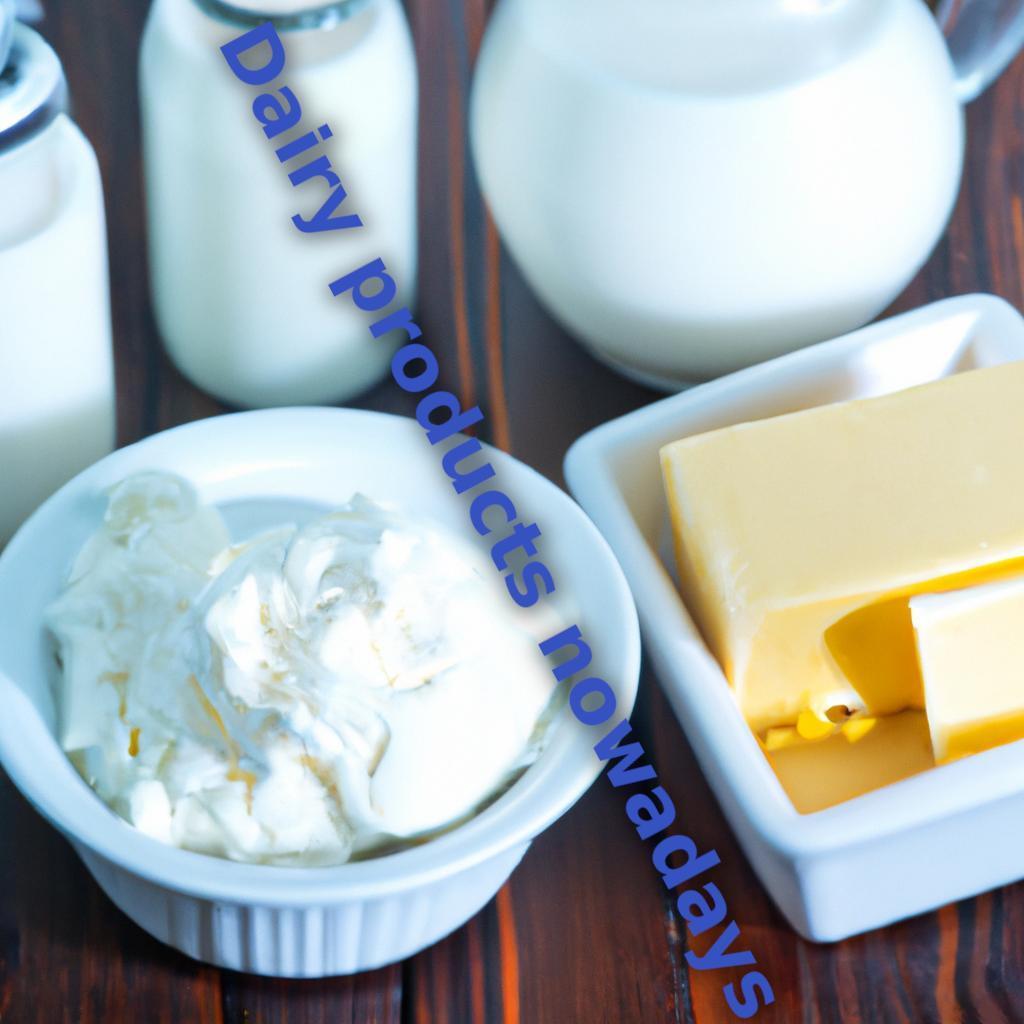


In the annals of culinary history, the story of dairy products is one of delightful evolution, spanning centuries of culinary innovation and cultural transformations.
The Dawn of Dairy:
The journey began in ancient times, when nomadic societies discovered the art of milk preservation, leading to the creation of rudimentary dairy products like yogurt and cheese. These early concoctions not only extended the shelf life of milk but also became staple components of various diets.
Cheese-Making Craftsmanship:
The craft of cheese-making flourished in ancient civilizations such as Greece and Rome. From the crumbly feta to the decadent brie, cheese became an art form, with different regions developing their unique varieties and techniques. Monasteries in medieval Europe played a crucial role in refining the cheese-making process, contributing to the diverse array of cheeses we enjoy today.
The Renaissance and Butter’s Ascent:
The Renaissance era witnessed a surge in culinary creativity, and butter emerged as a culinary star. Previously considered a byproduct of cheese-making, butter transformed, becoming a versatile ingredient used to enrich dishes across Europe.
Industrial Revolution and Dairy Innovations:
The Industrial Revolution ushered in a new era for dairy products. Innovations like pasteurization and refrigeration transformed milk into a safer and more accessible commodity. The rise of creameries and dairy cooperatives streamlined production, making dairy products more widely available to the masses.
World Wars and Dairy Rationing:
The 20th century brought with it the challenges of World Wars, leading to rationing and scarcity. Dairy products, especially butter and milk, were subject to rationing, prompting creative substitutes and innovations in food science. Margarine, for instance, gained popularity as a substitute for butter during wartime shortages.
Modern Dairy Diversification:
As we entered the latter half of the 20th century, dairy products diversified with the advent of technology. Yogurt became a health craze, and the yogurt aisle of supermarkets transformed into a vibrant display of flavors and probiotic varieties. Non-dairy alternatives, born out of health and environmental concerns, gained popularity, offering options for lactose-intolerant and vegan consumers.
Artisanal Resurgence and Sustainable Practices:
In the 21st century, there is a renaissance of appreciation for artisanal dairy products. Small-batch cheese-makers and local creameries are gaining recognition for their commitment to quality and sustainable practices. Consumers, now more than ever, seek ethically produced and locally sourced dairy products.
Milk products are food products made from milk or cream. They can include a wide variety of dairy products, such as milk, cheese, yogurt, butter, cream, and ice cream, among others. Milk products are an important source of nutrition for many people around the world, as they provide a rich source of protein, calcium, and other essential nutrients. Milk products can be consumed in many different ways, such as by drinking milk, spreading butter on bread, adding cream to coffee, or enjoying a bowl of yogurt or ice cream for dessert.
Here are some examples of milk products:
Milk (whole, skim, 2%, etc.)
Cheese (cheddar, mozzarella, brie, feta, etc.)
Yogurt (plain, flavored, Greek, etc.)
Butter
Cream (heavy cream, whipped cream, sour cream, etc.)
Ice cream
Cottage cheese
Cream cheese
Condensed milk
Evaporated milk
Buttermilk
Kefir
Powdered milk
Flavored milk (chocolate, strawberry, etc.)
Cheese spreads and dips (queso, ranch, etc.)
Milk is a popular product worldwide, but some countries have a higher consumption of milk and milk products than others. Here are a few examples:
Finland: Finland is known for its high consumption of milk per capita. Milk is often used in traditional Finnish foods, such as porridge, and is also a popular drink.
Sweden: Like Finland, Sweden also has a high consumption of milk and dairy products, with cheese being particularly popular.
India: Milk is an important part of the Indian diet, and is often used to make chai tea and other traditional dishes.
United States: While the United States does not have as high a consumption of milk as some other countries, it is still a popular product and is often consumed with meals or used in cooking and baking.
Australia: Milk consumption is also high in Australia, with dairy products being an important part of the country's cuisine.
There are several dairy products that are known for being expensive due to their production process or rarity. Here are some of the most expensive products made from milk:
Moose Cheese: Made from the milk of domesticated moose, this cheese is only produced on a small farm in Sweden, making it one of the rarest and most expensive cheeses in the world.
White Stilton Gold: Produced in England, this cheese is blended with real gold and gold liqueur, giving it a unique flavor and a hefty price tag.
Donkey Milk: Donkey milk is known for its high nutritional value, and is used in a variety of luxury skincare products. It can also be consumed as a drink or used in cooking.
Moose Milk: Moose milk is high in protein and fat, and is used to make a variety of dairy products such as cheese, butter, and yogurt. It is only produced in small quantities and is therefore quite rare and expensive.
Pule Cheese: Made from the milk of Balkan donkeys, Pule cheese is one of the most expensive cheeses in the world. It is produced in Serbia and can cost up to $600 per pound.
Milk is one of the most common food allergens, particularly in children. Milk allergy is an immune system response to the proteins found in milk, most commonly casein and whey. Symptoms of milk allergy can vary from mild to severe and may include hives, vomiting, diarrhea, difficulty breathing, and anaphylaxis, which is a severe and potentially life-threatening reaction.
It's important for those with a milk allergy to avoid milk and milk products. Fortunately, there are many non-dairy alternatives available, such as soy milk, almond milk, and coconut milk, as well as dairy-free products like cheese, yogurt, and ice cream made from alternative ingredients.
It's worth noting that a milk allergy is different from lactose intolerance, which is the inability to digest lactose, the sugar found in milk. Lactose intolerance can cause symptoms like bloating, gas, and diarrhea, but is not typically life-threatening like a milk allergy.
Dairy products, such as milk, cheese, and yogurt, are a significant source of nutrients such as calcium, protein, and vitamin D, which are essential for maintaining good health. However, they also have both positive and negative sides that are worth considering.
Positive sides:
Nutrient-dense: Dairy products are a rich source of essential nutrients, including calcium, protein, and vitamin D. These nutrients are important for bone health, muscle function, and overall health.
Convenient: Dairy products are widely available and can be easily incorporated into meals and snacks.
Probiotics: Some dairy products, such as yogurt and kefir, contain beneficial bacteria called probiotics that can help improve gut health and boost the immune system.
Versatile: Dairy products can be used in a wide range of recipes and can add flavor, texture, and nutrition to dishes.
Negative sides:
Lactose intolerance: Many people are unable to digest lactose, a sugar found in milk, which can cause digestive issues such as bloating, gas, and diarrhea.
High in saturated fat: Some dairy products, such as cheese and butter, are high in saturated fat, which can increase the risk of heart disease and other health problems.
Environmental impact: Dairy production can have a significant environmental impact, including water and land use, greenhouse gas emissions, and pollution.
Animal welfare: There are concerns about the treatment of dairy cows, including confinement, stress, and the use of hormones and antibiotics.
Dairy products can be a valuable source of nutrients and convenient food options, but there are also potential downsides to consider, such as lactose intolerance, high saturated fat content, environmental impact, and animal welfare concerns. It's important to make informed choices based on individual health needs, environmental considerations, and ethical concerns.
As we savor the richness of dairy products today, each slice of cheese, a dollop of yogurt, and a pat of butter carries with it a history that spans centuries. From ancient innovations to modern artisanal creations, the story of dairy products continues to unfold, leaving an indelible mark on our culinary heritage.
My pleasure,
Risa La
We use cookies
We use cookies and other tracking technologies to improve your browsing experience on our website, to show you personalized content and targeted ads, to analyze our website traffic, and to understand where our visitors are coming from. Privacy Policy.